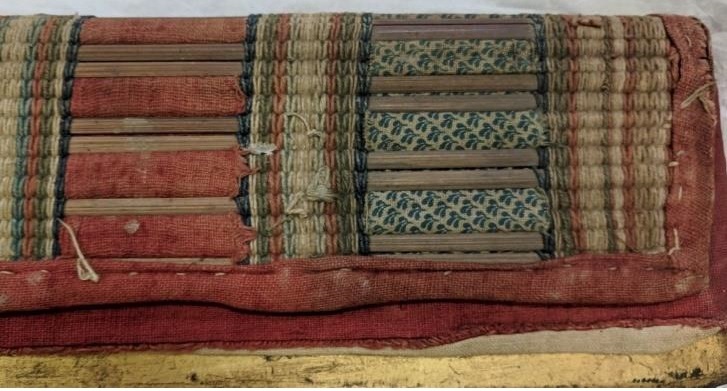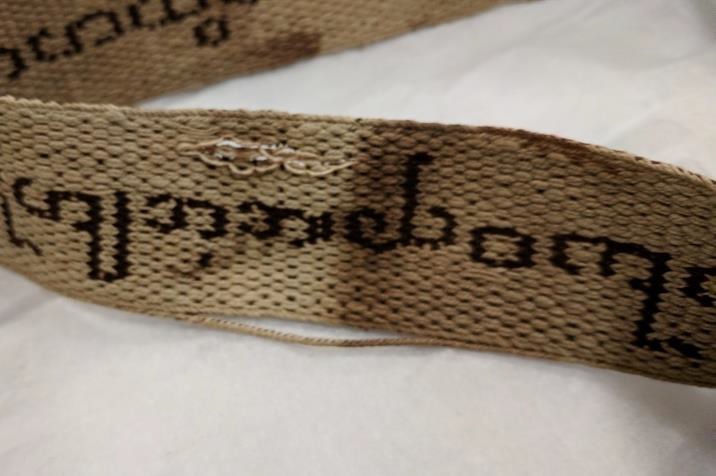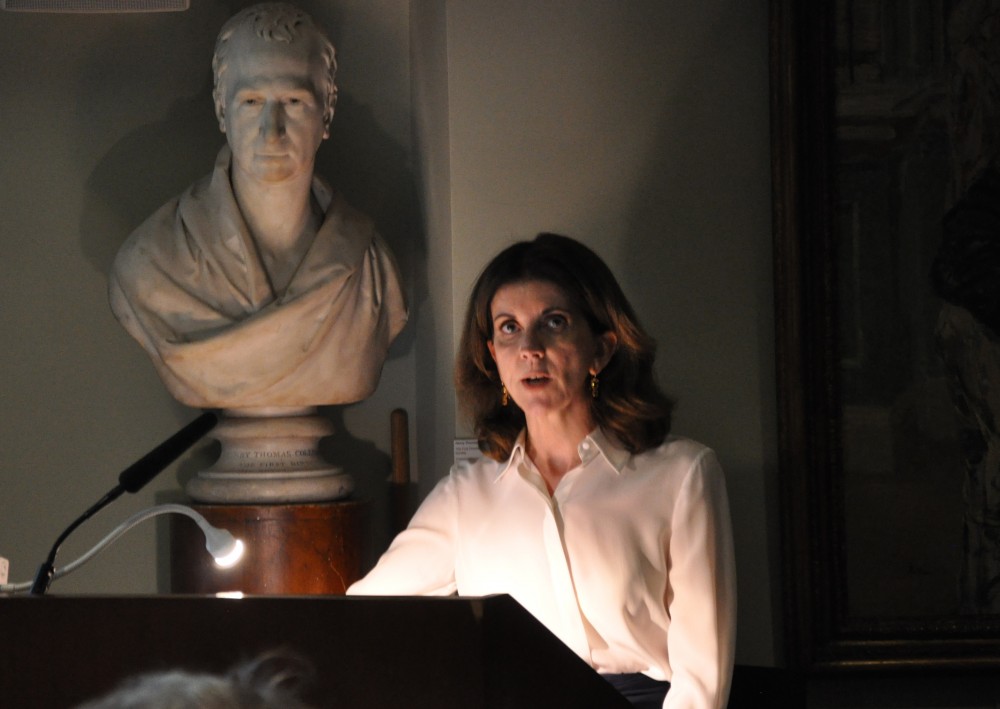Help us conserve Burmese manuscript and its rare woven braid
From today, Friday 1 March 2019, the Society is beginning a short campaign to raise funds towards the conservation of one of our manuscripts. The object in question is RAS Burmese 86, one of our Burmese Kammavācā manuscripts. Kammavācā is a Pali term which means “an assemblage of passages from the Tipitaka – the Theravada Buddhist canon – that relate to ordination, the bestowing of robes, and other rituals of monastic life” (see more info here). Kammavācā manuscripts have been one of the most popular genres for Western collectors of Burmese texts, and as such they are quite well represented in Western collections. One of the reasons this particular manuscript stands out – in addition to its intrinsic beauty – is that it is accompanied by a sazigyo, which is a woven band used for binding manuscripts. This sazigyo is a particularly early example of this rare and distinctive art form.

Created in 1792, this Kammavācā comprises 11 dark red lacquered, gilded, and decorated plates. The plates are contained within two light wooden covers, and wrapped in a multi-coloured cotton cloth woven with bamboo slats. While the plates themselves are in comparatively good condition, the cloth containing them has suffered from deterioration over time. Its colours have faded, there is age-old dirt heavily concentrated within the woven threads, much of the fabric is fraying, threads are loose or unravelling, and one of the bamboo slats is broken. We need a professional conservator to carefully clean the manuscript, secure the loose threads in place, support the broken bamboo, and make a bespoke, conservation box to protect the manuscript in the future.

This is an especially old sazigyo and, unlike more recent, brightly coloured examples, it has a brown background. It has become discoloured over time and contains stains and dirt. A potentially more serious problem is that there are several abrasions and disruption to the weave; the wefts of the cloth have been lost in some areas; the side cord is loose in a number of places; and some supplementary wefts are loose or broken, and rest on the surface of the weave. As well as cleaning the sazigyo, these loose threads really need to be secured to ensure that this precious object does not deteriorate further. Once it is stabilized, the sazigyo will be stored on a custom-made roller, and kept in the customized box with the manuscript.

In order to carry out this conservation treatment, the Society needs to raise £1820. The Society is asking its members, supporters, and those with an interest in protecting cultural heritage, to help us meet this cost. Several years ago, the Society tried to raise enough funds to carry out a similar treatment for this valuable object, and despite several generous donations, we were unable to get close enough to our target to complete the work. We hope that, now, additional contributions can be added to those donations (which are still earmarked for this project) to make sure this manuscript and its sazigyo can continue to be studied and appreciated for many years to come.

There are no details about how this particular manuscript entered the Society’s collections. The Society has about 130 Burmese manuscripts, almost all of which were acquired by the Society during the nineteenth century, by purchase or donation from British collectors. Many of our Burmese manuscripts will soon be digitized as part of our ongoing collaboration with the Internet Archive, which has already seen over 200 palm-leaf manuscripts from the RAS collections photographed and made available for people all over the world to see online: https://archive.org/details/royalasiaticsociety.
We hope that some of our readers will consider donating to this project. To do so, please visit https://royalasiaticsociety.org/donations/ and select the option “Pay Now”. Please write “Burmese Braid Fund” as a reference for your contribution.
In other news, on Tuesday, 26 February, Deborah Freeman Fahid delivered a lecture at the Society titled “The Àger Rock Crystal Chessmen: Some Early Medieval Imports from the Iranian World?” Deborah’s lecture focused on a group of Islamic rock crystal chessmen from the early medieval period in the al-Sabah Collection, Kuwait. Long recognised as masterpieces of early Islamic lapidary work, these fifteen chess pieces, made of rock crystal and ivory, were discovered in a European church and have generally been regarded as the products of an Egyptian workshop. Outlining their fascinating history, Deborah’s talk suggested an origin further east in the Iranian world.

The Society’s next lecture takes place on Thursday, March 7, at 6.30pm, when Dr Jharna Gourlay (University of Lucknow) will deliver a talk titled “Forceps, Stethoscopes and Sisterhood: British Female Doctors in 19th Century India”. We hope you will be able to join us then.
